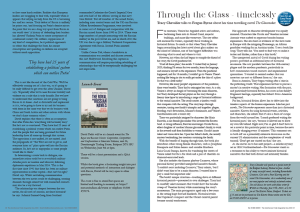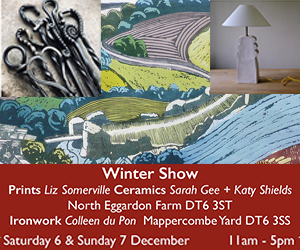Tracy Chevalier talks to Fergus Byrne about her time travelling novel The Glassmaker.

For centuries, Venice has beguiled artists and authors, beckoning them into its Grand Canal, majestic buildings, and maze-like waterways. The city offers rich material for writers, especially those working in historical fiction. So much so that when Tracy Chevalier began researching her latest novel about glass makers on the island of Murano, one of her biggest difficulties was choosing what to read and where to visit.
However, just when she had begun to compile the thread of her story, the Covid pandemic hit.
‘I had all these plans,’ she recalls. ‘I visited Italy in January 2020, thinking I’d return for two months, learn the language, and immerse myself in the experience. Then the pandemic happened, and for 18 months, I couldn’t go to Venice. There’s nothing like being in situ to really get under the skin of a place. So that was a little tricky.’
However, like many people’s experiences of the pandemic, there were benefits. Tracy had to reimagine her story. As a city, Venice is always in danger of becoming the main character, but Tracy developed the key players in the story through a literary time lapse by introducing a range of historical additions to the central narrative. The result creates a timeless world that competes with the setting. The story leaps through centuries, tracing one family’s triumphs and tragedies: plague, flooding, war’s devastation, Murano’s dominance, and Venice’s transformation into a tourist city.
Tracy was particularly intrigued by characters like Maria Barovier, a rare female glassmaker who invented the Rosetta bead. A strong influence, Barovier encourages Orsola Rosso, eldest daughter of another Murano glassmaker’s family, to work in the revered craft then forbidden to women. Orsola’s innate talent and vision drive her. Upon her father’s death, she secretly masters beadmaking, her creations sustaining the family.
With the benefit of leaping through time, the book also introduces other strong female characters, such as Joséphine Bonaparte and Italian heiress and socialite Marchesa Luisa Casati Stampa, known for wandering the streets of Venice naked but for a fur cloak and a pair of cheetahs on diamond-encrusted leads.
She also includes the famous playboy Casanova, whose personal history provided unexpected narrative threads. ‘I couldn’t resist including Casanova,’ Tracy admits, ‘but I didn’t want him to be a main character. I wanted him to play a small but important role.’
The book’s unique structure—touching down at different historical periods—presented its own challenges. Tracy had to carefully select moments that would show the broader sweep of Venetian history while maintaining the story’s momentum. The main protagonists aged only a few years as the setting leapt forward hundreds. Historical events like Napoleon’s conquest and the vibrant carnival period became crucial touchstones.
Her approach to character development was equally nuanced. Characters like Orsola and Venetian incomer Antonio were crafted to represent broader human experiences. She also hints at evidence of the slave trade in Europe with the intriguing Domenego, an African gondolier working for an Austrian trader. ‘I see a book like soup,’ Tracy tells me. ‘You need to find ways to make it tastier and thicker, rather than a thin broth.’
The unexpected arrival of Covid during her writing process provided an additional layer of historical resonance. She saw parallels between the 16th-century plague and the modern pandemic, particularly in how communities traced contacts and implemented quarantines. ‘I wanted to remind readers that our ancestors are not so different from us,’ she says.
Born in America, Tracy began writing after a stint in the publishing world. That experience led her to pursue a master’s in creative writing. Her fascination with the past, and particularly historical fiction, has roots in her family’s Huguenot heritage, especially her father’s Swiss American background.
For her, historical fiction allows her to delve into the timeless aspects of the human experience. Like her past novels, The Glassmaker represents more than just a historical narrative. Known for using historical events, activities, and characters, she admits that it’s also a form of escape from the world around her. ‘I much preferred writing the historical parts,’ she says, ‘because it allowed me to leave my own life behind. Right now, I’m so glad I don’t have to set a novel at this particular point in time, because the news is literally changing every 10 minutes.’ This comment sets us both off on a potentially extensive discussion on the current US administration and the complexities of world turmoil. ‘Don’t get me started on that,’ she says.
As she moves on to her next project—a murder mystery set in 1826 Northumberland—The Glassmaker stands as a testament to her ability to weave intricate historical narratives that feel both distant and intimately familiar.




